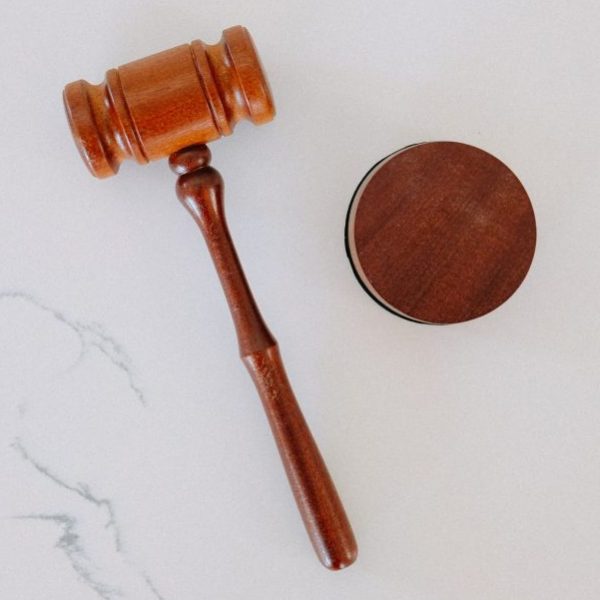The “Seriatim Practice” of the Supreme Court
Paul W. Kahn—
We can imagine a state in which courts issued judgments without explanation. The need to settle disputes requires some form of adjudicatory mechanism; it does not necessarily require explanation of the decisions. When there is explanation, the form of presentation has varied over time. The American practice of issuing “an opinion for the Court” began early, but it was not there from the start. British practice had been for the multiple judges collectively hearing a case to each issue an oral opinion. This “seriatim practice” was followed by our Supreme Court in its early years. A Justice would speak in his own voice, expressing his views on the right disposition of the case. And why not? Each Justice is, after all, equal to the others; each is appointed on the same terms and exercises the same authority. Some might tend to vote together, but factions can form in any political body. Thomas Jefferson famously defended the seriatim practice on the ground that every Justice has an obligation to defend his own decision; none should seek to “hide” behind the Court’s opinion.
This view of the individual character of the judge’s authority is hardly dead. Justice Clarence Thomas, for example, insists on expressing what he personally thinks the law means, even after that view has been rejected by a majority of the Court. He does not consider the Court to be an institution that authoritatively sets forth the meaning of the law to which he, like everyone else, is bound. He thinks that his authority flows from his appointment. He can, therefore, continue to insist that everyone else is wrong. Like the traditional British judge, Justice Thomas thinks that the law is fixed in place and time, independently of the courts: each judge’s role is to discern its content and announce what it is that he sees.
There is a certain irony here: the more objective a judge thinks the law, the more likely he is to believe that judicial authority runs to the individual. A claim of legal objectivity is likely, therefore, to lead to dissensus, not unity, among judges. That dissensus is not limited to disagreement on the Supreme Court but can extend all the way down the judicial hierarchy. After all, every judge derives her authority from her appointment, not from higher courts. This idea of individual authority is entirely familiar in the sciences: the scientist does not acquiesce to a dominant view when she believes it to be wrong. If the law is a fact to be discovered, authority must be based on truth, not on obtaining a majority on the court. On this view, the work of the opinion is not persuasion but demonstration. Justice Thomas believes he has hold of the truth. For him, those who have been persuaded otherwise cannot determine the content of the law—even when they are a majority—any more than scientists can establish the truth simply by agreeing with each other.
Whenever we think there is a legal truth of the matter, we will move toward the personalization of judicial power. Interestingly, a similar view of judicial power gains support from those who take quite the opposite position on the objective character of the law. Those who deny the distinction between law and politics, who think that a judgment is based on nothing but the values of the judges, also view judges as individuals not bound by others. This view is particularly strong among popular commentators on legal affairs. They assess the judgments of the Supreme Court along the same liberal/conservative spectrum by which they measure other political actors. They count judicial votes just as they count votes in the legislature. They want to know whether the liberals or the conservatives are winning. Viewing the courts this way, they want to know how individual judges will exercise their power. There is no place in this calculus for consideration of the opinion as a collective exercise in persuasion. The opinion is meaningful only as an indicator of which faction’s views are dominant at any given time.
There is no denying that judicial factions exist. Nor is there any doubt that such a factional analysis is important if you want to predict how a case might come out. Nevertheless, the analogy between legislators and judges quickly becomes quite strained. Legislators do not generally issue opinions. The point at which they try to persuade a citizen audience is in the political campaign that precedes legislative action. Those campaigns tend to focus on the future: a candidate ordinarily spends her time promising, not justifying, past behavior. A candidate who spends too much time on the latter is already in deep trouble. The judicial opinion has just the opposite character.
Every public authority performs in two dimensions: vote and voice. The weights of voice and vote stand in an inverse relationship when we compare legislators and judges. Legislation can, and usually does, reflect the relative weight of different interest groups: a weight measured in the ability to gather votes. There is no expectation, let alone requirement, that legislative policy be consistent across broad areas of regulation. Subsidies for corn, but not for soybeans, is not a problem, even if there is no good, economic reason for the distinction. It is not a problem even if it would be better policy to subsidize soybeans instead of corn. Moving from a policy focused on economic stimulus to one focused on deficit reduction may not make sense under a single theory of economic growth. A legislature, however, need not explain itself; it need not give voice to reasons that stand apart from the vote. Compromise can be a legislative virtue—so much so that we might appreciate a practice of horse-trading among legislators.
From Making the Case by Paul W. Kahn. Published by Yale University Press in 2019. Reproduced with permission.
Paul W. Kahn is Robert W. Winner Professor of Law and the Humanities and director of Orville H. Schell, Jr. Center for International Human Rights at Yale Law School. His previous publications include The Reign of Law, Legitimacy and History, and Law and Love.
Further Reading:

Featured photo by Foundry Co on Pixabay


























